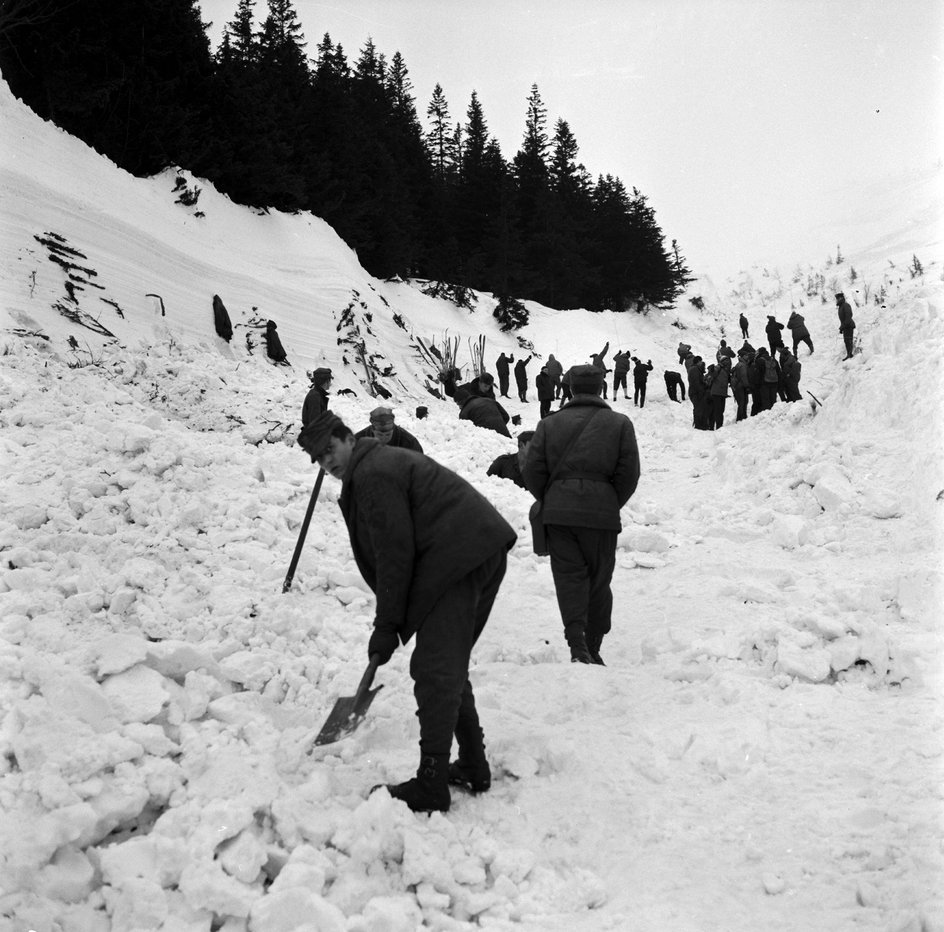A major tragedy in the Polish mountains. 19 people died
In Biały Jar, an avalanche took a grim toll. The weather was beautiful that day, and the trails were full of tourists who were not prepared for winter conditions.
Everything indicated an approaching disaster. GOPR warnings did not discourage touristsThe winter of 1967/1968 in the Karkonosze Mountains was exceptionally snowy, windy and capricious. The first GOPR warnings about the situation and the possibility of an avalanche in the area of Biały Jar near Śnieżka appeared on January 10.
The situation worsened as the days passed. At the end of the month, warming and then frost caused the snow cover on the slopes above Biały Jar to freeze. In turn, the fresh layer of snow reached a thickness of up to 130 cm. As if that were not enough, strong gusts of wind arrived from March 13. Snowdrifts and snow overhangs formed on the northern slopes.
The most serious warning signal came on March 17, 1968, three days before the tragedy. In Biały Jar, an avalanche swept away a group of seven skiers. They were lucky, everyone managed to get out from under the snow. GOPR issued warnings about the high probability of further avalanches.
One of the warnings was issued on March 20. Some of the tourists returned to Karpacz, but several groups decided to continue their expedition. Among them was a group of a dozen or so Soviet students from the Mining Institute in Kuybyshev. The weather that day was ideal. The temperature hovered around zero degrees, and the sun's rays intensified the intense whiteness of the snow. The chairlift to Kopa was out of order due to strong winds, which forced the tourists to choose the black trail through Biały Jar. This decision turned out to be tragic.

The group that set off from Biały Jar was led by a person from Warsaw who had previously guided Soviet groups in Karpacz many times, but who did not have mountain guide qualifications. Among the tourists were 13 young teachers from Kuybyshev, four citizens of the GDR, including a married couple on their honeymoon, and two Poles.
Tourists in high heels and half-boots. Nonchalance ends in tragedyGOPR rescuer Andrzej Brzeziński, who worked at the Juwentur Carpathian centre at the time, recalled, quoted by dzieje.pl: "In the group from Kuybyszew, no one even had footwear appropriate for the season. The girls went in high heels, and the men in half-boots." The Poles and Germans were slightly better prepared, but their equipment still did not correspond to winter conditions in the mountains.
At about 11:00 the group reached a fork in the trail. One of the German citizens went to the side towards the trees. This saved his life. An avalanche came down from the upper edges of Biały Jar. It was as much as 800 meters long and 80 meters wide. Its front reached a height of 20-25 meters. The mass of snow, estimated at 50-70 thousand tons, rushed at a speed of close to 100 km per hour and covered the route in just 48 seconds, burying 24 people.
Five people – two Poles, two Germans and one Russian – were thrown aside by the gust of wind and survived. The remaining 19 tourists, including 11 women, died on the spot, mainly from mechanical injuries. The rescue operation began almost immediately. Everyone rushed to help: the lift workers from the station on Mała Kopa, GOPR men, Czech rescuers of the Horska Służba, soldiers of the Border Protection Troops, the police, firefighters, residents of Karpacz and tourists. In total, over 1,100 people participated in the search.

Rescuers dug tunnels to reach the bodies. By the end of the first day of the operation, only 10 bodies had been recovered, the last ones were not recovered until April 5. The disaster in Biały Jar is a tragic reminder of the power of nature and the need to respect mountain conditions. The sunny weather and lack of proper preparations deceived tourists who ignored the warnings of GOPR.
After the disaster, conspiracy theories emerged suggesting that the avalanche was triggered by foreign intelligence agents searching for Nazi treasures hidden in Biały Jar. However, expert opinions have disproved these speculations, confirming that the avalanche was spontaneous due to unstable snow conditions.
Biały Jar, located at the foot of Śnieżka (1603 m above sea level), is an elongated, semicircular depression with steep slopes, which in winter turns into a potential avalanche trap. Although the Karkonosze are not high mountains, their steep gullies, gales and changing weather conditions can be just as dangerous as in the Tatras. Droga Śląska, leading along the black trail through Biały Jar, was a popular tourist route, especially in summer. In winter, however, it became a high-risk place. The incident of March 20, 1968 remains to this day the greatest avalanche tragedy in the history of the Polish mountains. The tragedy in Biały Jar led to the establishment of the Snow and Avalanche Service in the Karkonosze.
After the tragedy in Biały Jar, a granite monument was erected in memory of the victims, but in 1974 it was destroyed by another avalanche. A new monument was unveiled in 2018 on the 50th anniversary of the disaster.
przegladsportowy





